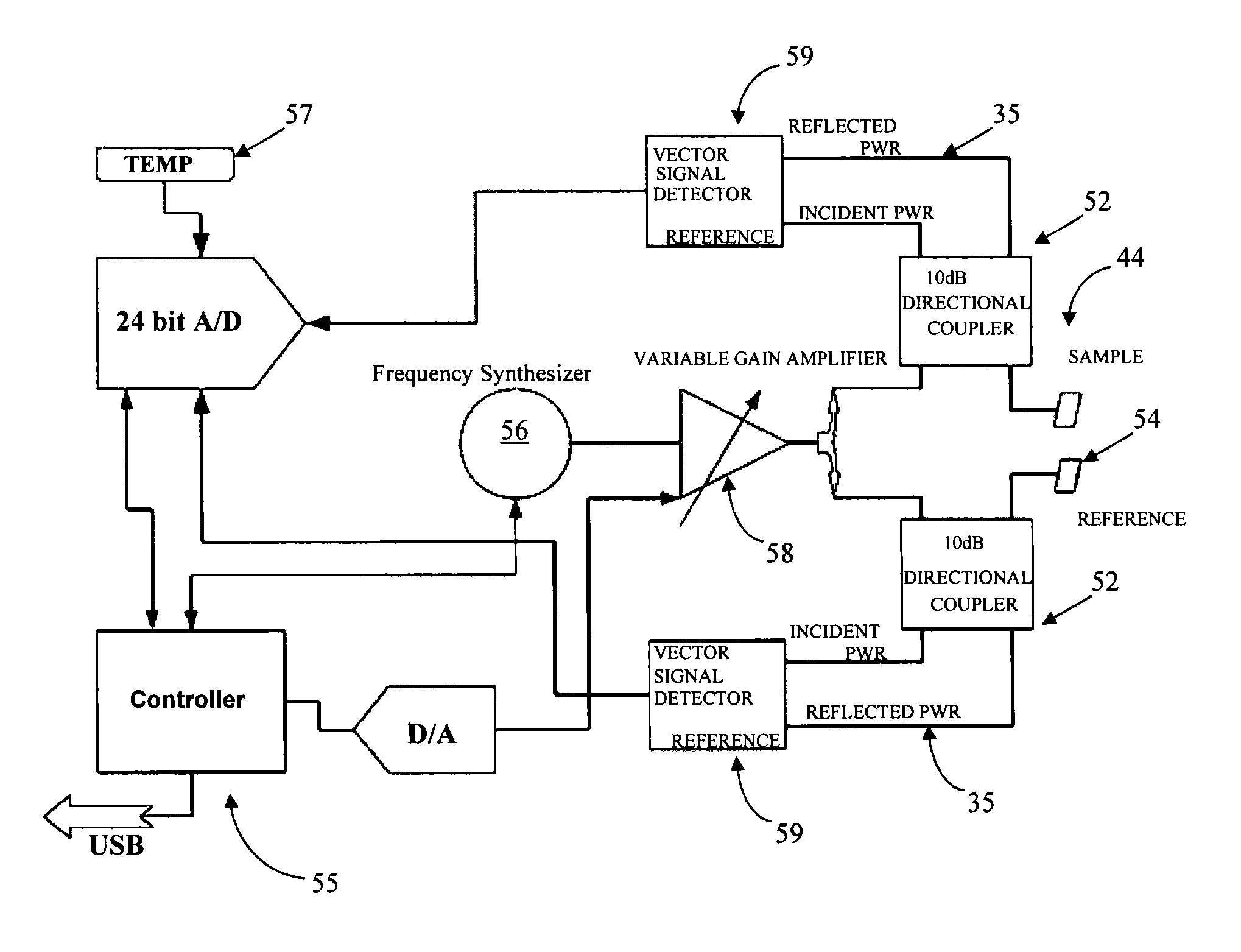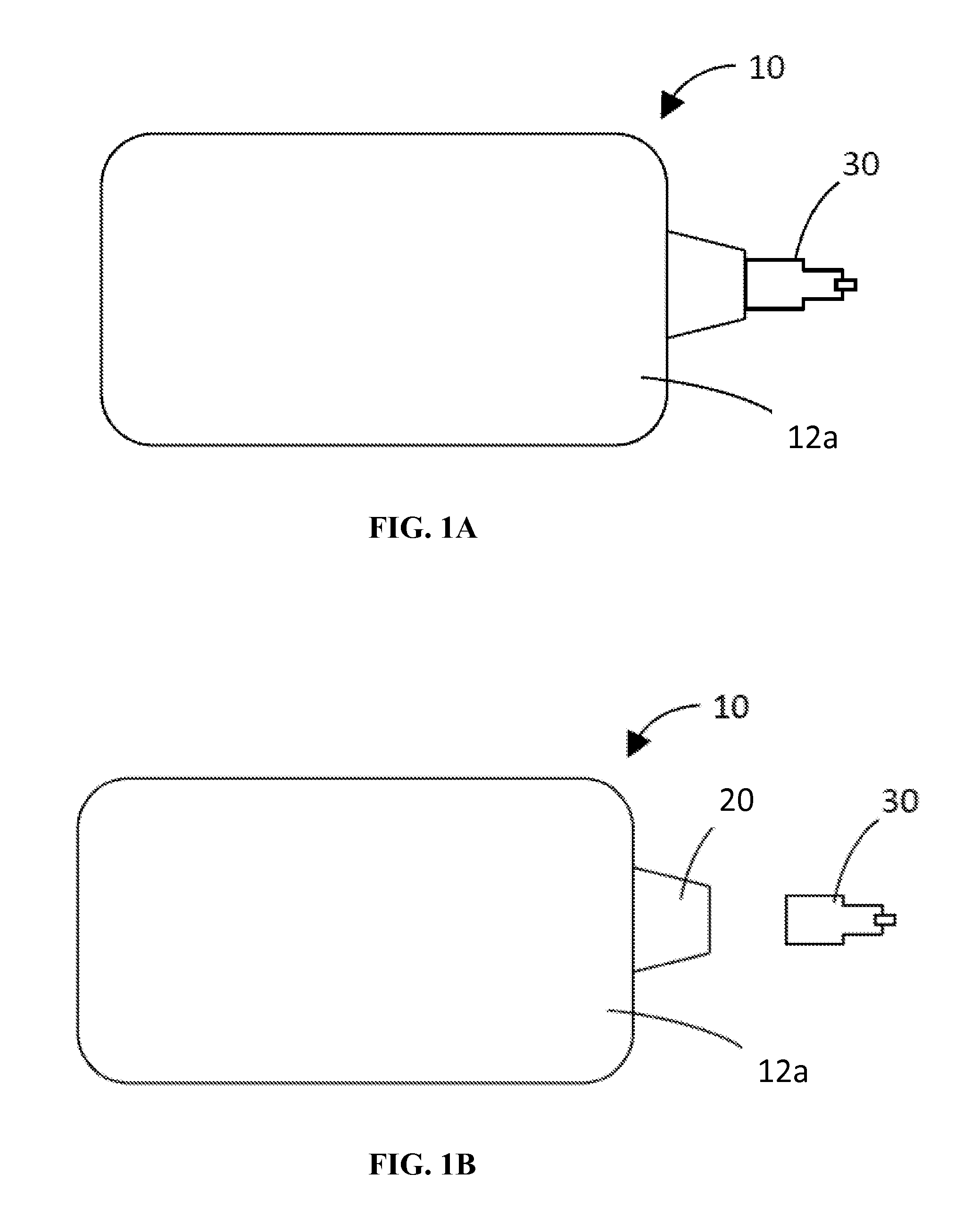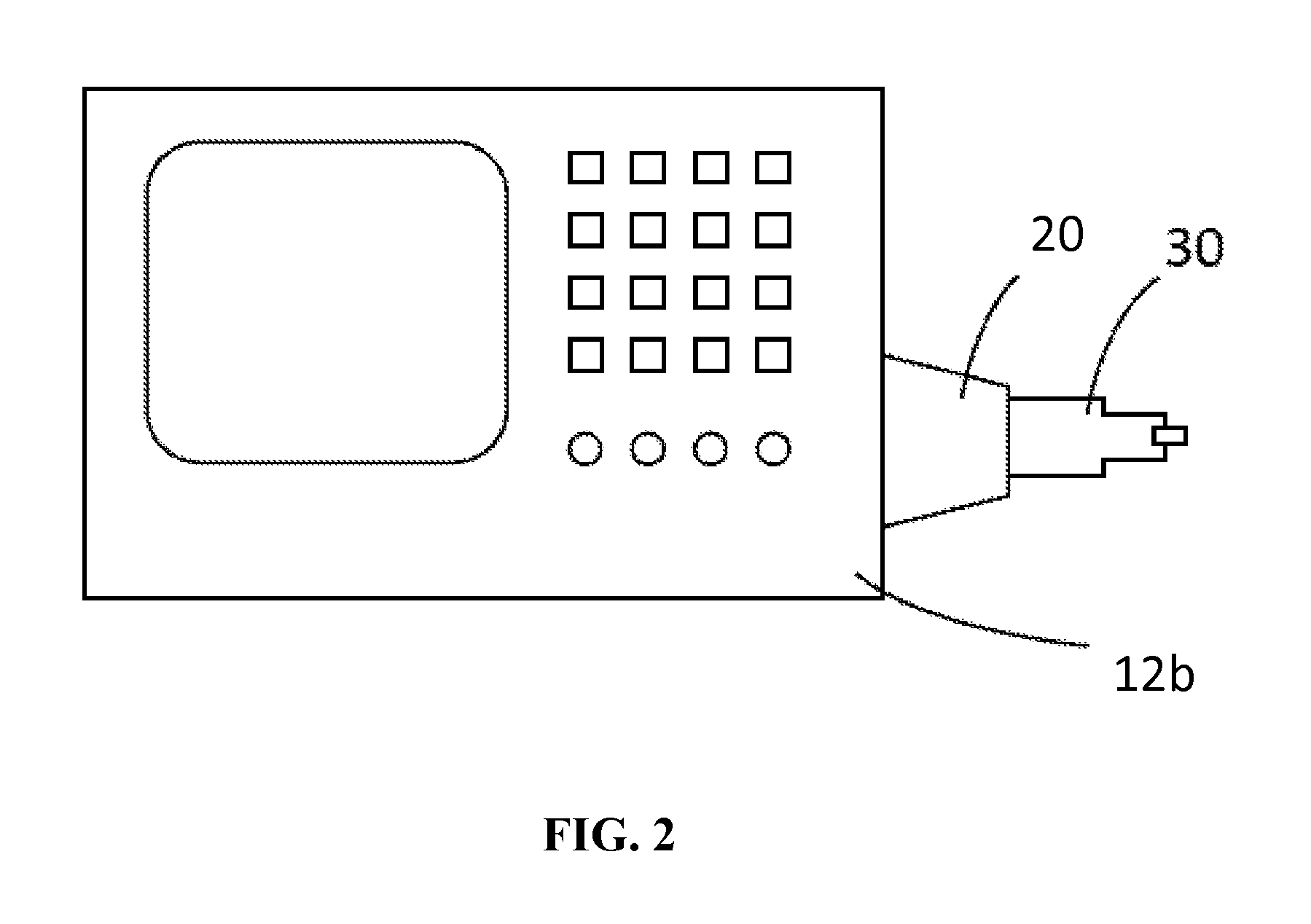Measurement of binding kinetics with a resonating sensor
a resonator sensor and binding kinetic technology, applied in the field of measurement and testing, can solve the problems of long response time, limited diagnostic testing and analysis of chemical or biological materials at the point of need, and expensive remote or cumbersome laboratory equipment that costs thousands of dollars
- Summary
- Abstract
- Description
- Claims
- Application Information
AI Technical Summary
Benefits of technology
Problems solved by technology
Method used
Image
Examples
Embodiment Construction
[0033]While this invention may be embodied in many different forms, there are described in detail herein specific preferred embodiments of the invention. This description is an exemplification of the principles of the invention and is not intended to limit the invention to the particular embodiments illustrated.
[0034]One aspect of the present invention is directed toward a simple, effective, cost-efficient, reliable, repeatable, sensor for resonance shift detection of chemical and / or biological materials that compensates for the variation of the unique resonant frequency in individual resonators. For the sake of brevity, these devices are referred to herein as biosensors, though it should be understood that they can be used to detect materials in samples other than biological samples. Resonance shift detection, in various embodiments, can be based on phase shift or frequency shift. One type of embodiment includes a sensor and resonance shift detection system that can compensate or a...
PUM
| Property | Measurement | Unit |
|---|---|---|
| resonant frequency | aaaaa | aaaaa |
| resonant frequency | aaaaa | aaaaa |
| diameter | aaaaa | aaaaa |
Abstract
Description
Claims
Application Information
 Login to View More
Login to View More - R&D
- Intellectual Property
- Life Sciences
- Materials
- Tech Scout
- Unparalleled Data Quality
- Higher Quality Content
- 60% Fewer Hallucinations
Browse by: Latest US Patents, China's latest patents, Technical Efficacy Thesaurus, Application Domain, Technology Topic, Popular Technical Reports.
© 2025 PatSnap. All rights reserved.Legal|Privacy policy|Modern Slavery Act Transparency Statement|Sitemap|About US| Contact US: help@patsnap.com



